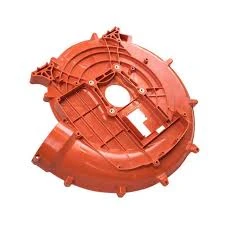Mobile:+86-311-808-126-83
Email:info@ydcastings.com
melting and casting aluminum
Melting and Casting Aluminum An Overview
Aluminum is one of the most versatile and widely used metals in modern manufacturing. Its unique properties, such as a low density, excellent corrosion resistance, and good electrical conductivity, make it a favored choice in various industries, from aerospace to automotive. The processes of melting and casting aluminum are integral to the creation of aluminum products, and understanding these processes is crucial for manufacturers.
Melting Aluminum
Melting aluminum involves heating the metal until it reaches its melting point, which is approximately 660 degrees Celsius (1220 degrees Fahrenheit). The melting process can be carried out in different types of furnaces, depending on the volume of aluminum being processed and the desired quality of the final product.
Types of Melting Furnaces
1. Reverberatory Furnaces These are commonly used in foundries for large-scale melting of aluminum. The design allows for efficient heat distribution and minimizes oxidation of the metal.
2. Induction Furnaces Utilized for high-precision melting, induction furnaces use electromagnetic fields to heat the metal. This method is known for its energy efficiency and is frequently employed when high purity is needed for the aluminum.
3. Electric Arc Furnaces These can achieve very high temperatures and are often used to melt scrap aluminum. The process is rapid and efficient, making it a viable option for recycling operations.
Factors Affecting Melting
The melting of aluminum can be affected by several factors including the type of furnace, the purity of the aluminum, and the presence of alloying elements. Impurities in aluminum can lead to poor mechanical properties in the final cast product, so controlled melting and handling are essential.
Casting Aluminum
Once aluminum has been melted, it can be poured into molds to create various shapes and products. The casting process itself is critical, as it determines the final characteristics of the aluminum product.
melting and casting aluminum

Common Casting Methods
1. Sand Casting This traditional method involves creating a mold from sand, which is then filled with molten aluminum. Sand casting is known for its flexibility in producing complex shapes and is cost-effective for low-volume production.
2. Die Casting In this method, molten aluminum is injected into a steel die, allowing for high precision and repeatability. Die casting is ideal for high-volume production, and it produces parts with excellent surface finishes and dimensional accuracy.
3. Investment Casting Also known as lost-wax casting, this process involves forming a wax pattern that is coated with a ceramic material. Once the ceramic hardens, the wax is melted away, creating a mold for molten aluminum. This method is suited for complex geometries and high-precision applications.
4. Permanent Mold Casting This technique uses reusable metal molds, which allow for better thermal control during the cooling process. It typically results in fewer defects and improves the mechanical properties of the cast aluminum.
Quality Control in Melting and Casting
Quality control is critical in both the melting and casting stages of aluminum manufacturing. Each of the casting methods has specific quality assurance measures that need to be followed to ensure that defects are minimized. Techniques like ultrasonic testing, non-destructive testing (NDT), and metallographic examination are common practices to assess the integrity of the cast products.
Moreover, controlling the temperature during melting and casting is crucial. Too high a temperature can lead to oxidation or gas entrapment, while too low can result in incomplete filling of the molds, leading to defects. The cooling rate is also significant; a slower cooling rate may lead to better mechanical properties but can also increase the risk of porosity.
Environmental Considerations
As the demand for aluminum continues to rise, so too does the need for sustainable practices in melting and casting. Recycling aluminum is one of the most effective ways to reduce energy consumption and environmental impact, as recycling aluminum saves up to 95% of the energy required to produce new aluminum. Advances in technology have made it possible to melt and cast recycled aluminum with high quality, allowing manufacturers to reduce waste and conserve resources.
Conclusion
Melting and casting aluminum are fundamental processes that play a crucial role in the production of aluminum products. Understanding the various methods, factors affecting quality, and sustainable practices ensures that manufacturers can produce high-quality aluminum while minimizing environmental impact. With ongoing advancements in technology and increased focus on recycling, the future of aluminum manufacturing is both promising and essential for a sustainable industry.
-
Why Should You Invest in Superior Pump Castings for Your Equipment?NewsJun.09,2025
-
Unlock Performance Potential with Stainless Impellers and Aluminum End CapsNewsJun.09,2025
-
Revolutionize Your Machinery with Superior Cast Iron and Aluminum ComponentsNewsJun.09,2025
-
Revolutionize Fluid Dynamics with Premium Pump ComponentsNewsJun.09,2025
-
Optimizing Industrial Systems with Essential Valve ComponentsNewsJun.09,2025
-
Elevate Grid Efficiency with High-Precision Power CastingsNewsJun.09,2025











